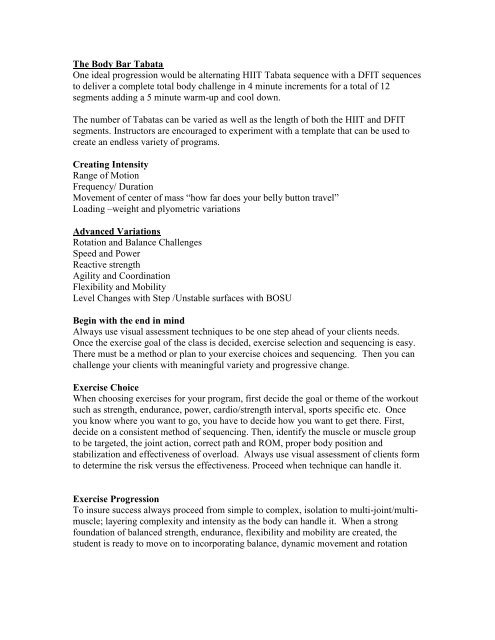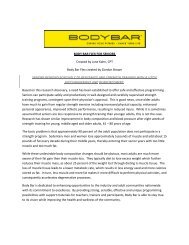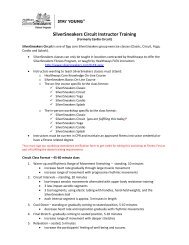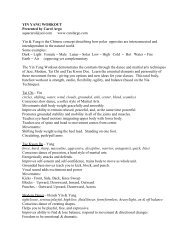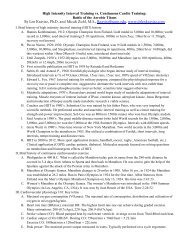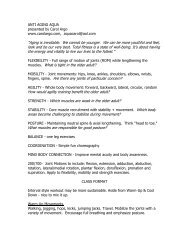Body Bar Tabata - FitnessFest
Body Bar Tabata - FitnessFest
Body Bar Tabata - FitnessFest
You also want an ePaper? Increase the reach of your titles
YUMPU automatically turns print PDFs into web optimized ePapers that Google loves.
The <strong>Body</strong> <strong>Bar</strong> <strong>Tabata</strong><br />
One ideal progression would be alternating HIIT <strong>Tabata</strong> sequence with a DFIT sequences<br />
to deliver a complete total body challenge in 4 minute increments for a total of 12<br />
segments adding a 5 minute warm-up and cool down.<br />
The number of <strong>Tabata</strong>s can be varied as well as the length of both the HIIT and DFIT<br />
segments. Instructors are encouraged to experiment with a template that can be used to<br />
create an endless variety of programs.<br />
Creating Intensity<br />
Range of Motion<br />
Frequency/ Duration<br />
Movement of center of mass “how far does your belly button travel”<br />
Loading –weight and plyometric variations<br />
Advanced Variations<br />
Rotation and Balance Challenges<br />
Speed and Power<br />
Reactive strength<br />
Agility and Coordination<br />
Flexibility and Mobility<br />
Level Changes with Step /Unstable surfaces with BOSU<br />
Begin with the end in mind<br />
Always use visual assessment techniques to be one step ahead of your clients needs.<br />
Once the exercise goal of the class is decided, exercise selection and sequencing is easy.<br />
There must be a method or plan to your exercise choices and sequencing. Then you can<br />
challenge your clients with meaningful variety and progressive change.<br />
Exercise Choice<br />
When choosing exercises for your program, first decide the goal or theme of the workout<br />
such as strength, endurance, power, cardio/strength interval, sports specific etc. Once<br />
you know where you want to go, you have to decide how you want to get there. First,<br />
decide on a consistent method of sequencing. Then, identify the muscle or muscle group<br />
to be targeted, the joint action, correct path and ROM, proper body position and<br />
stabilization and effectiveness of overload. Always use visual assessment of clients form<br />
to determine the risk versus the effectiveness. Proceed when technique can handle it.<br />
Exercise Progression<br />
To insure success always proceed from simple to complex, isolation to multi-joint/multimuscle;<br />
layering complexity and intensity as the body can handle it. When a strong<br />
foundation of balanced strength, endurance, flexibility and mobility are created, the<br />
student is ready to move on to incorporating balance, dynamic movement and rotation


